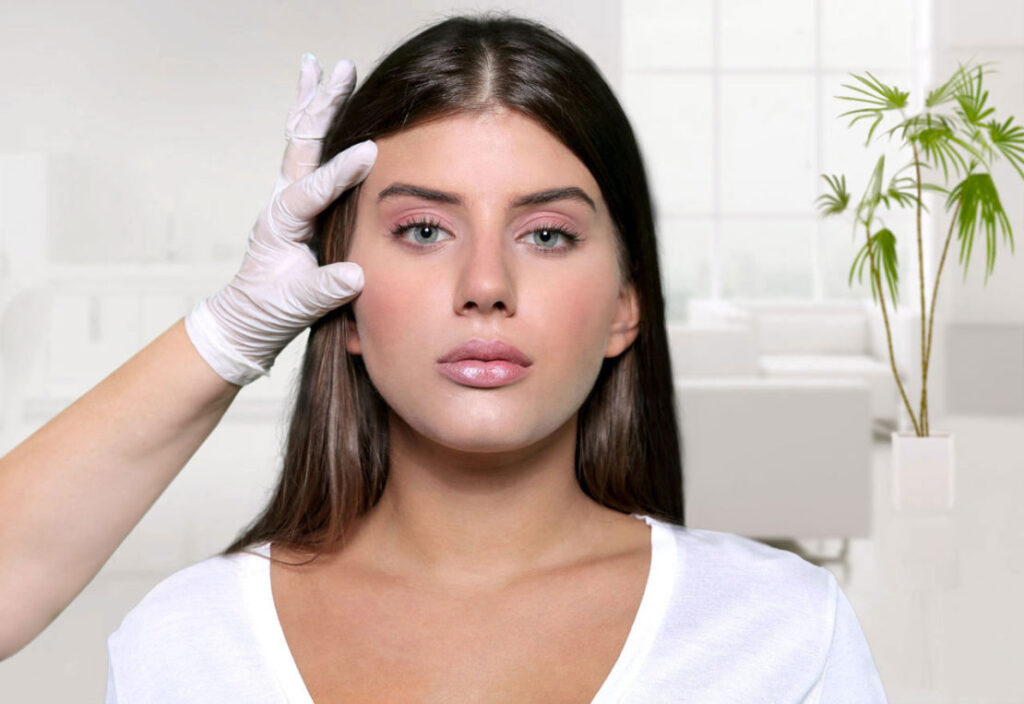How do I treat the lines on my forehead? What can I do to have fuller pouty lips? Is it Botox or fillers that I need or both? These are common questions patients often ask when looking for treatments to improve their appearance and reduce signs of aging and sun damage. Medispas often give conflicting and confusing advice to the public simply because the staff who perform treatments are often not doctors and certainly not board certified dermatologists or plastic surgeons which we call “core physicians”. Nurses and doctors who run medispas simply do not have the training or experience of a dermatologist or plastic surgeon. Their knowledge of facial anatomy is limited. They do not have the breadth and depth of experience with agents like Botox and various fillers that dermatologists and plastic surgeons possess. Core physicians have a customized treatment plan based upon years of personal experience and can decide which filler or fillers is most appropriate to rejuvenate the face. Most importantly, they are incapable of handling many of the complications of these relatively safe treatments.
First and foremost understand that results are not based upon the injection. They are based upon the “injector”. It matters who does your Botox and filler. Surprisingly, most “core physicians” are competitive when one considers price and results. It’s far better and more economical to have it done once versus twice. If you have any complication from these treatments at a medispa then chances are you will be referred to a “core physician” anyway for treatment and correction of the problem.
Let’s look at the differences between these products now that you’ve learned about the differences between “core physician” injectors and all others. Botox belongs to the large group of products called neuromodulators. These products include Botox, Dysport, and Xeomin. All of them are injected superficially into the underlying facial muscles to cause a temporary paralysis lasting 3-4 months in duration. The are useful to treat lines and wrinkles of the forehead, glabella (vertical lines between the eyebrows also called 11’s), and the lateral orbital region (Crow’s feet). Most indications are for rejuvenation of the upper 1/3 of the face. Other uses include treatment of “bunny lines”, gummy smile, Marionette lines (lines from the corners of the mouth to the jawline), and neck bands to create a smoother and tighter jaw and neck line.
Fillers are designed to restore lost volume to the face on a temporary basis. They are usually composed of hyaluronic acid derivatives (HA’s), naturally occurring materials which are safe, FDA approved, and reversible if necessary. Fillers last 6-18 months depending upon which anatomic area is treated and the individual filler product chosen. Fillers are generally used in the lower 2/3rd ’s of the face but can also be used to fill in the hollowing of the temples which happens with aging. Fillers can restore lost volume to the orbital region, cheeks, lips, chin, and even jaw line. Facial lines and furrows around the mouth also respond well to several fillers. Lip lines and prominent nasolabial folds can be reduced with HA’s. In certain cases they can be used to fill in small nasal defects when a patient does wish to undergo rhinoplasty.
Core physicians often combine Botox and fillers to fully rejuvenate certain areas of the face including lip lines which can be reduced with Botox and softened further with HA’s. This is because lip lines are due to two factors: loss of collagen and skin thickness from aging and sun damage which can be filled with HA’s and overactive upper and lower lip muscle function which can be reduced with Botox. Similarly, prominent nasolabial folds are due to loss of midface volume which can be filled with longer acting HA fillers like Voluma. The remaining prominence of the nasolabial folds can be softened further with injection of fillers like Juvederm into the tissue along the folds. Improvements in jaw and neck line definition often respond best to combination therapy such as fillers to define the jaw and chin and precise Botox injections into the superficial neck muscles to lift the neck and sharpen the jawline.
If you are considering Botox or a filler to improve your appearance then remember it’s more important to focus on who is doing your treatment than what is being injected. This is not a “commodity” like a stock or used car. You cannot return it if you unsatisfied. After all, it’s your face we’re talking about. Your face is how the world sees you and most importantly how you see yourself. Don’t sell your self short. Seek out a board certified dermatologist or plastic surgeon to improve your appearance. In the end, you’re worth it.





